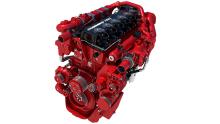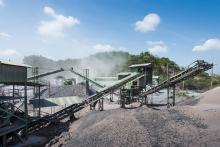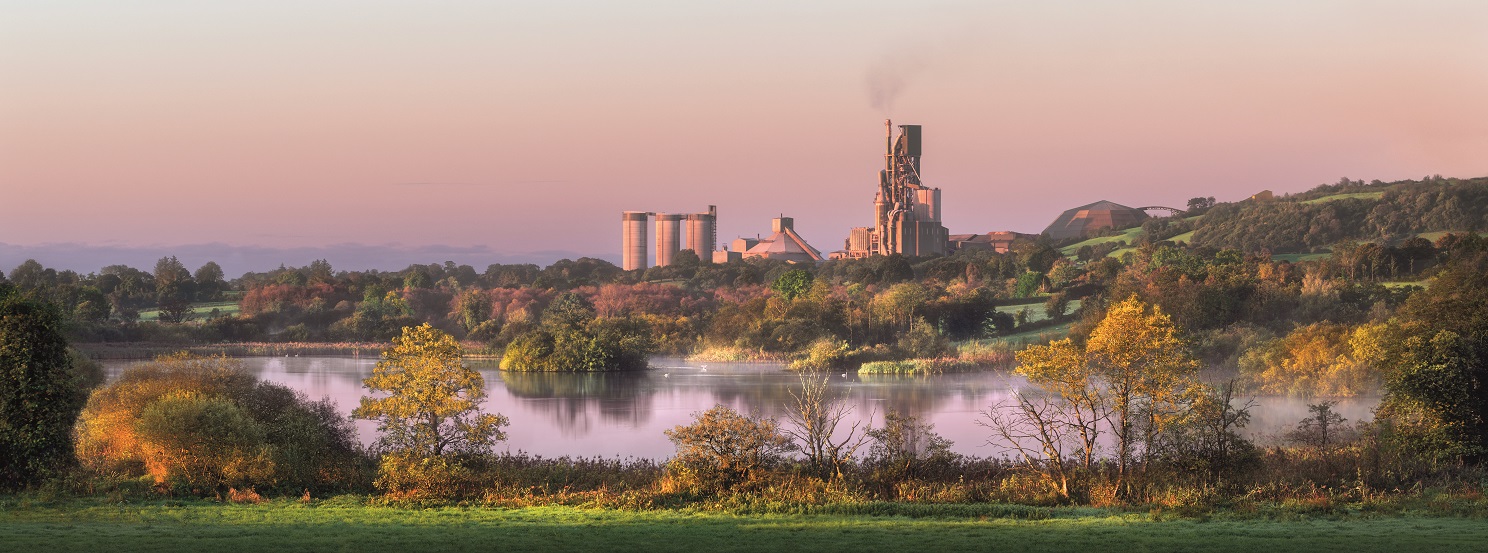
Paul Monaghan joined the diverse building products manufacturer headquartered along the Fermanagh Cavan Irish border – which rebranded as Mannok from Quinn Industrial Holdings in October 2020 - early in 2021 as its first sustainability officer.
Commenting on how the 2030 vision was developed, he says: “The board of directors and CEO, Liam McCaffrey, have developed a long-term business sustainability strategy. We worked on the strategy very intensively for 12 to 15 months and published it in May of last year.
“It is built around three main pillars of focus, which are people, planet and partners. There are a number of different priority areas within each pillar and an inclusive roadmap of 36 targets.”
To achieve the 33% carbon emissions reduction target by 2030, Monaghan says this effectively means the company needs to remove the vast majority of the fossil fuels out of its cement making process.
“We've identified the main decarbonisation pathways that are centered around things like alternative fuels, alternative raw materials, renewable energies, and carbon capture, and also alternative waste materials and how we can incorporate them into a process to help displace some of the more carbon intensive materials that we have been using,” he adds.
The decarbonisation process is an enormous undertaking for Mannok, which Paul says will require significant innovation and technology developments, and a lot of collaboration between both with existing and new technology partners.
“It's quite a big task, but it's also quite exciting and it’s going to lead the business into new and interesting areas,” he says.
Eliminating fossil fuel
In March this year, Mannok and Danish cement production technology provider, FLSmidth, announced the successful implementation of the FUELFLEX Pyrolyzer, a new combustion system which has almost eliminated the use of fossil fuel in the most carbon intensive stage of cement production at Mannok’s , reducing 240 tonnes of carbon emissions per day, whilst significantly reducing NOx emissions. This is comparable to the annual carbon emissions of the population of a medium-sized town of approximately 5,000 people.
Monaghan adds that the principal way that the cement industry has decarbonised to date is by using locally sourced lower carbon alternative fuels to displace fossil fuels such as coal and gas.
“We are trying to maximise the use of lower carbon alternative fuels at the moment.”
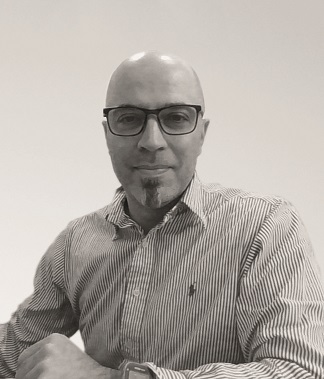
The company already has projects underway in green hydrogen and biodiversity. It also has approved projects to be introduced on a phased basis between 2024 and 2026 to start using alternative fuels in place of fossil fuels in the kiln process, which will significantly reduce its CO2 emissions. The target of this is to displace 55 to 70% of fossil fuels with alternative fuels by around 2025-26.
Mannok is also playing a prominent role in benefiting biodiversity and its local community. It has formal educational partnerships with four secondary schools, three of these are near in County Fermanagh in Northern Ireland and the other in the Irish Republic in County Cavan, the two counties in which Mannok operates in.
“They are typically themed partnerships around various different skills that contribute to sustainability,” says Monaghan. “Such as engineering, business, and digital innovation. It all feeds into skills that will help create a low carbon future and offering young people a career path and opportunity to develop within their local area. We hope to have two more of these partnerships by 2025.”
He adds that the increasing use of green hydrogen going forward is hugely important to the company’s decarbonisation plans.
“The manufacture of cement and building products is a very energy and carbon-intensive business, and we are addressing the issue of how to decarbonise it by taking out fossil fuels and applying various different decarbonisation pathways and technologies.
“Over the next 10 to 15 years, our plan is to build our own wind and solar assets, on our landholdings, to generate a large part of our electricity base, and this will help produce green hydrogen.”
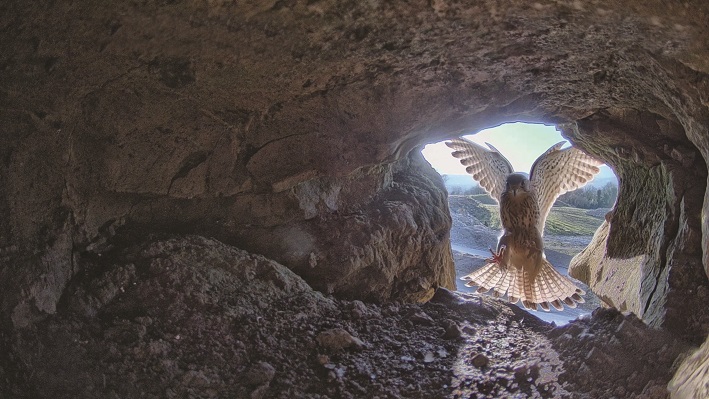
Green hydrogen
Phase one of this plan began in 2021, to develop a 5MW electrolyser project to produce green hydrogen. Mannok then went into a competitive bid process in 2022, under the first round of the UK’s new Net Zero Hydrogen Fund and was one of 15 successful companies in the UK and one of the only two in Northern Ireland being awarded funding for its green hydrogen project.
One of the most innovative parts of the project is to take the unused energy that the grid cannot accept and use it to generate green hydrogen for powering Mannok’s large heavy vehicle fleet. The company operates 150 on-road HGVs and around another 50 off-road vehicles in the four quarries it operates, which in total use up to 4 million litres of diesel a year. The 5MW electrolyser will decarbonise 70% of this figure by taking out 2.8 million litres of the diesel being used.
“That will strip several thousand tonnes of CO2 out of our transport fleets,” Paul says. “Coupled with increasing our renewable energy generation, the idea is that we can scale up our green hydrogen production as well. So, it is a huge mindset change for the business, and it demonstrates leadership to move away from being a major fossil fuel consumer to a green energy producer. There will be a high degree of energy independence too, with our own renewable assets.”
He says that the company is looking to achieve similar success in converting its heavy vehicle fleet to green hydrogen as has been achieved by fellow Northern Irish manufacturing company, Wrightbus, which has won major orders for its hydrogen fuel cell buses both locally and internationally.
Wrightbus has also developed a hydrogen combustion engine, which Paul says could be an option to use in the future for its quarrying vehicles.
“Our target is to decarbonise 100% of our fleet by 2040, whether it’s electrification or via hydrogen, on-road or in quarries,” he adds. “If we can do better than that then we will, depending on the technological maturity that is available.”
The company has electrified some of its van fleet and installed EV charging facilities and is now looking at decarbonising its heavy trucks and quarry vehicles.
HVO fuel trial
Mannok is currently conducting a HVO (hydrotreated vegetable oil or renewable diesel) fuel trial with part of its truck fleet, and Monaghan says this could be used as an interim ‘gateway’ decarbonisation pathway until green hydrogen technology is fully mature.
Paul says there is likely to be only limited electrification of its truck fleet, given their heavy weights and loads, and the distances they travel (Mannok headquarters around 100 miles from the ports of Dublin and Belfast). He adds that large off-road machinery such as the excavators at Mannok’s quarries will be most suited to using high-density hydrogen fuel.
He says that decarbonising Mannok’s cement manufacturing process will have a knock-on effect in reducing the embodied carbon in its downstream concrete products, and this will be an important part of positioning itself as a provider of sustainable materials.
“As the rules of the game change and you start seeing levers like public procurements, regulations and standards starting to come into effect, that will be a driver for the whole industry to supply greener products as the norm, whereas at the moment they are a bit niche,” he adds.
The major markets for the company’s products are in the island of Ireland and Great Britain, and Paul says this will likely remain the case going forward. Sixty percent of its production is currently sold in the UK, and important products for the company include its lightweight, thermally efficient Aircrete blocks that are used in masonry construction. “These are very popular in the UK for energy- and thermally efficient buildings that lend themselves to renewable energy and near-zero energy heating systems,” he adds.
Mannok, which employs 830 people, also has a separate food packaging business which has a more international footprint, exporting as far afield as New Zealand.
There are several different manufacturing divisions within the Mannok operation, which are all within three miles of each other on either side of the Irish border.
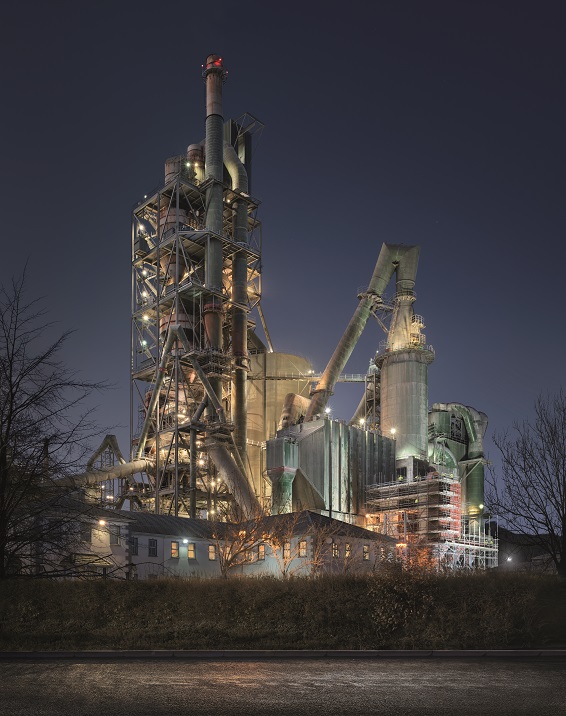
Covid and Ukraine
In terms of the effects on Mannok’s very energy-intensive operations from the Covid pandemic and Ukraine war, Monaghan says the company saw its energy costs almost triple in a short space of time.
“Those prices have since softened, and the company was able to navigate the situation and still maintain employment and profitability,” he adds. “I think that is to do with the strength of our leadership team and support of our employees and customers.”
As with other companies in its sector, Mannok has had to cope with the global skills shortage. We look for technical people, engineers, fitters but it is very difficult to attract and retain them,” says Monaghan. “This is why the educational partnerships, graduate programmes and apprenticeships are so important for us long-term.”

